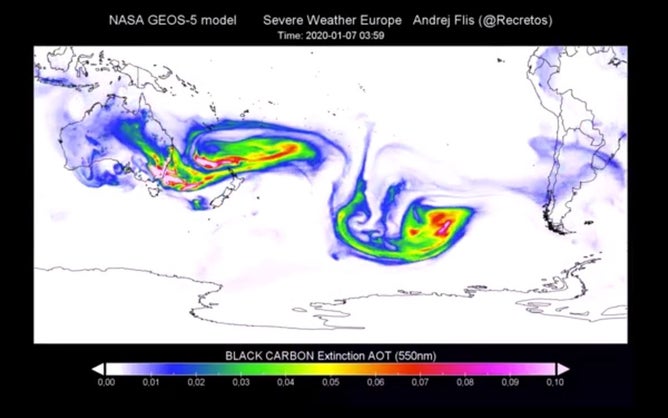The recent fires that have ravaged North America's west coast, Europe, the Amazon and the Arctic Circle should have been enough, together with all of the other mounting evidence, to bring politicians to their senses and convince even hardcore climate skeptics that global warming is already impacting our world with even more dire consequences to come if we do not reverse course.
In fact, the only point where the scientists have erred is in their predictions about how fast temperatures will climb, and how resounding the shorter-term consequences would be.
The global wildfires are one case in point. The ever hotter, drier weather, exacerbated by forest mismanagement in some cases, is causing higher-intensity, faster-moving fires that can turn into erratic firestorms, argues Marc Castellnou, president of the Spanish independent wildfire prevention group Pau Costa Foundation.
Castellnou said that many experts initially though that the ferocious blazes in Europe, California and Australia in 2009 and 2012 were perhaps freak phenomena. But then fierce wildfires in Chile and Portugal in 2017, followed by fires in Greece and California the year after, confirmed an ominous pattern.
"That was the new normal arriving. 2018 has confirmed that," he told Horizon: The EU Research & Innovation Magazine. This kind of lethal wildfire is of an entirely different quality: "It eats everything," Castellnou says. Firefighters are nearly helpless against blazes of this intensity, he says.
The current fires in Australia are already the most destructive ever in terms of reach. Records for the region's hottest days -- up to 120 degrees Fahrenheit -- have been shattered one after another, and meteorologists say more blistering weather is on its way. Low humidity and stiff winds have only complicated firefighting and rescue efforts, which now include 10,000 emergency personnel and the Australian Defense Force. The smoke is so intense that giant ash clouds have even wafted to New Zealand nearly 1,300 miles away.
The new normal is not only more lethal, it's also harder to predict.
"All of a sudden it's getting a lot harder to protect against what's coming," writes journalist David Wallace-Wells in his book "The Uninhabitable Earth."
There's still more to come: "much more fire, much more often, burning much more land," he writes. Wallace-Wells notes that globally, the length of wildfire seasons have grown by nearly 20% since 1979. In the US, wildfires burn twice as much land now as they did in 1970, and by 2050, the devastation caused by fires is expected to double again. And "for every additional degree of global warming, it could quadruple," he argues.
https://edition.cnn.com/2020/01/04/app- ... index.html



 . Australija ima veliki problem sa tim požarima, to je baš gust i opasan dim.
. Australija ima veliki problem sa tim požarima, to je baš gust i opasan dim.



